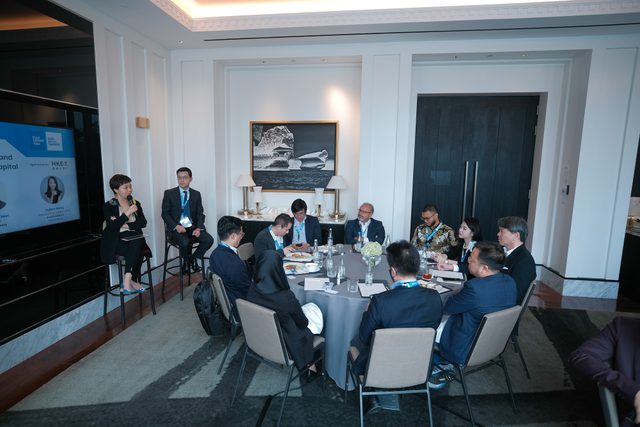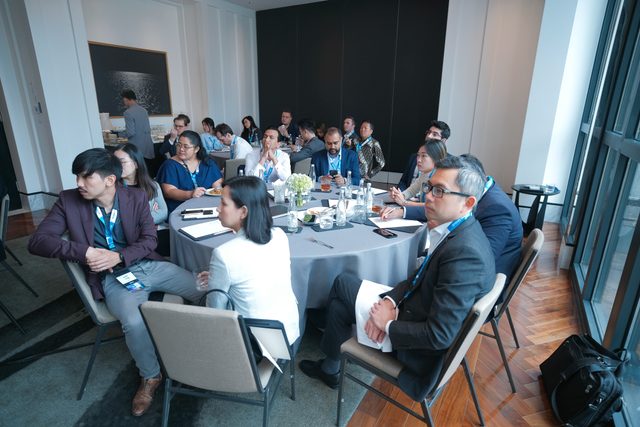Partner content in association with
HKEX’s growing attractiveness as a listing venue for Southeast Asian companies
Hong Kong has been the world’s largest IPO destination seven times in the past 14 years and there is optimism in the market that it might rise up the charts in 2023. In 2022, Hong Kong ranked as the world’s third largest IPO destination with 75 IPOs raising a combined $12.7 billion, according to Refinitiv data. Its counterparts in mainland China – namely Shanghai’s STAR Market and Shenzhen’s ChiNext Board – came first and second, respectively.
To start the year on a high note and showcase the role of Hong Kong in the future of IPOs, DealStreetAsia, in association with HKEX, hosted an exclusive luncheon at the PE-VC Summit in Jakarta, Indonesia in January 2023.
Christina Bao, Co-Head of Sales & Marketing at HKEX and Jonathan Hsui, partner in the corporate department of leading international law firm Allen & Overy joined Eudora Wang, Greater China editor at DealStreetAsia for a riveting discussion about the rise of Hong Kong as a viable listing venue for companies in Southeast Asia and beyond.
A look back at HKEX’s reforms and strategy for success
Over the years, we have seen HKEX introduce a series of listing reforms, including some of the more prominent ones that brought Big Tech firms like Alibaba, Meituan, and Xiaomi to the local stock exchange. As public listing becomes more relevant for up-and-coming tech champions in SE Asia, could you walk us through the major listing reforms and how they have fared?
Christina Bao: Five years ago, HKEX was a very different marketplace than today. Historically, Hong Kong was viewed as a marketplace to accommodate more traditional economic sectors such as consumer, infrastructure, financial services, or real estate.
But in 2018, there was a shift in how the world operates and we needed to catch up. So at that point, we introduced three new listing chapters. The first chapter permitted listings of certain biotech issuers that do not meet financial eligibility tests for the Main Board; the second chapter permitted listings of companies with weighted voting right (WVR) structures; and the third chapter established a new concessionary secondary listing route for Greater China and international companies that wish to secondary list in Hong Kong. The third chapter targets New York-listed Chinese companies who may wish to seek a secondary listing in Hong Kong.
After the introduction of the new listing regime in April 2018, 254 new economy companies have listed in Hong Kong, raising a total of HK$916.4 billion and accounting for 65.1% of IPO funds raised in Hong Kong during the period. So if you look at the existing portfolio for Hong Kong listed assets, mostly their focus is still on traditional sectors like financial services and consumer, but also very much on new economy sectors like tech and healthcare. In December 2022, new economy companies accounted for 22.5% of average daily turnover in the cash equities market, compared with 4.1% in 2018.

Tailwinds for Hong Kong as a gateway to liquidity as China re-opens
We just had a bumpy year in SE Asia. Ernst & Young’s data shows, in SE Asia, there were a total of 137 IPOs raising $6.5 billion in 2022, about half of the $13.2-billion raised across 134 IPOs in the previous year. Should executives think more about diversifying their capital sources as we enter a year of limited liquidity, and potentially, more macro market uncertainties? Or should they wait until the global market turbulence is over?
Christina Bao: I think it has become an increasingly important consideration for management as well as the for pre-IPO investors due to various reasons. But I want to highlight one point, in terms of liquidity or supply of funding, that may actually vary from one jurisdiction, one geographical location to another. Because if you think about 10 years ago, pretty much everybody was in sync with the US market. When the US market is down, everybody else is down, when it is up and funding is sufficient, then the rest of the world is also picking up the same momentum. But nowadays, we do see a lot more divergence.
If you look at the macro data from China, annual money supply growth in Dec 2022 was fast at more than 12%, according to People’s Bank of China. And household savings are as high as 37% of China’s GDP, which is also unprecedented and means that people do have the money, it’s just that they’re not spending it, they’re not investing it, but they’re hoping to deploy that cash at some point. At the same time, interest rates are rising in the US. Therefore, economists say that it is very likely that the Chinese authorities’ space for loosening would grow in 2023 and they will also implement a more active fiscal policy to support the economy. So this is really a reopening story that is currently playing out.
With that kind of divergence we actually want to be more versatile in terms of strategies. So you’re not just looking at one market, but multiple markets in terms of your options. In Hong Kong, we have 40% of the holdings in the hands of the UK and the European investors. Chinese investors account for around 30% of the market. The diversity of the Hong Kong market provides an additional boost in terms of the potential future dynamics because, again, you don’t want to have all the investors take one direction in one particular market, you want people to take different views. And that’s why we are also pretty active with the derivatives market in Hong Kong.
Jonathan Hsui: Of course our overseas clients are very familiar with the Hong Kong stock market and they are interested in the liquidity and corporate documents that I mentioned. In terms of the market, especially in the past two quarters where we had a bit of a capital-tight market, I think that investors or companies will look at the bigger picture of whether that’s the right value for them. The market changes really quickly. In the past two quarters when we have a number of IPO projects on hand, people were trying to do it rather slowly because the market isn’t actually at the right or the best timing. But now, no one can speculate how quickly the market comes back and they all want to accelerate their projects.
I think it’s more important for the clients to choose the right venue and to look at the bigger picture, and not only in the short term of one particular location. As we always say, you can’t go for a listing by pressing a button. It takes a lot of preparation and a lot of groundwork to do restructuring. Perhaps even one more pre IPO round, pre-investment and all that takes time. You have to be prepared when the right window opens.

Connecting SEA innovators with opportunities and global capital
For SE Asia’s rising new economy and tech companies, how will a HK listing help address their capital needs and maybe, advance their overall business plans? And for their shareholders and venture investors, is HK better positioned to deliver outsized returns compared to stock exchanges elsewhere?
Christina Bao: For these investments, definitely, I think Hong Kong becomes a very natural choice. I think Hong Kong’s diverse investor base speaks for itself. If we do have more Southeast Asian companies listing here, it will create a good precedent for others to follow.
DealStreetAsia: From a legal perspective, could you help us understand the practicability of an Indonesian/Southeast Asian company going public in Hong Kong? What are the potential challenges, financial expenses, and the cost in time?
Jonathan Hsui: Firstly, as a whole, the regime is not divided into one set of rules for Chinese companies and then a set for Southeast Asian companies. It’s uniform rules and platforms across markets. So everyone has to go through this process. Of course, there are some technical questions like, for example, place of incorporation of listing. But in terms of the basic requirement or preparation, firstly they need to find a licensed financial adviser to sponsor your IPO. That sponsor will need to undertake due diligence requirements. So, it’s not a challenge only for Southeast Asian companies, but also for listing applicants to be prepared for the corporate governance structure. They need to clean up the compliance history and other related matters. They need to ensure they have the right management to fulfill multiple requirements and the right team of directors to be the leaders of the listed companies going forward.
Timing-wise, they need to have two months of preparation time between the point of identifying a sponsor and listing the application. This is a requirement because we expect the company and sponsor to work together for at least eight weeks before applying for listing. In practice, it will be longer because there will be other issues to deal with, like restructuring, or maybe another round of pre-angel investments, etc. As Christina mentioned, the process is very stringent. But on the upside you have visibility throughout the process. There won’t be a situation where you file the application and then you don’t know what’s happening. After filing, within two or three months time, if everything goes smoothly you get your approval.
Ambition to complement Asia’s local stock exchanges
EY data indicates that Indonesia is leading the IPO market performance in SE Asia with 60 IPOs raising $2.2 billion in 2022, or over one third of the total IPO funds raised in the region. As the local stock exchange is rapidly maturing, how do you see Hong Kong complementing local stock exchanges such as IDX and SGX?
Christina Bao: I think complement is a very good word and that’s exactly what we’re trying to do. We’re not trying to say that Hong Kong can take the place of all the domestic exchanges and that it is the sole platform for listing. Essentially, our ambition is to complement the local stock exchanges in Asia.
The equity market is always a local business and it is natural for a lot of the medium- and small-sized companies to consider listing in a local exchange, partly because of brand awareness and partly because of local policy support.
On the other hand, if you are a multinational company, or you have a global ambition, or you are a business in an emerging sector, or, if you are a business for which international listing can potentially raise your brand awareness – you may consider an overseas listing. These are all options.

Why overseas issuers should seek a HKEX listing
The Indonesia Stock Exchange is weighing a change in regulations to make it easier for foreign companies, especially tech giants, to directly list on the local bourses. How will it change the IPO landscape in the SE Asian region? What kind of overseas issuers may find a public listing in HK more attractive?
Jonathan Hsui: In terms of choosing between local markets and International, I think it all depends on your positioning in terms of investor facing, whether you are really targeting local investors, or what you want to achieve with international investors. That’s one key point. And also, depending on where the company will grow; whether they will only grow locally, or they are looking at the bigger picture in Southeast Asia. If they particularly want to tap into the China market it makes a lot of sense for them to list in Hong Kong.
DealStreetAsia: Currently, issuers from mainland China and Hong Kong are still dominant on the stock exchanges in Hong Kong. Do you see that dynamic changing? Looking at 3-5 years down the road, what will be the priorities in HKEX’s agenda to attract overseas issuers?
Christina Bao: To clarify, we do have 158 international listings at HKEX and it’s about 6% of our market, but it still needs to grow. That’s kind of why we’re here. We do have that ambition and that’s why we have our Singapore office. And we are also already establishing a new office in New York. In the first stage it is mostly to focus on the secondary market investors. And then we’re also in the process of establishing an office somewhere in Europe. Because of regulatory reasons, I cannot really disclose the venue at this point. But we’re doing that. That potentially can also serve the European market, as well EMEA in general.
With our strategy evolving and coming into reality, we are open to working closely and collectively with Southeast Asia companies so that we can understand what they need, what they want, and how we can help them do better.

